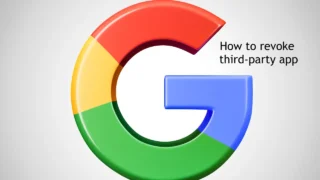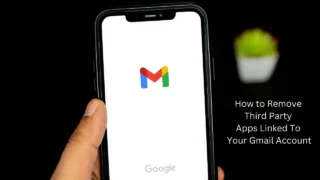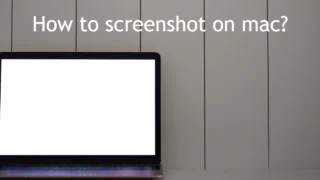Are you in the weight-loss industry? Do you want to start a blog about weight loss? You are in the right place.
Whether you realise it or not, the weight reduction industry is a massive billion-dollar industry that is only expanding at a rapid rate.
Here’s an interesting figure for the weight loss market in 2022.
The U.S. weight loss market is expected to reach $245 billion by 2022, with a CAGR of 6.9%, which is incredible.
So, if you are into weight loss blogging, you have a great opportunity to make a lot of money from your website. If you are wondering how you can excel in this market, this essay is designed for you. You will discover:
- How to create a weight loss blog in three simple steps.
- How to Make Money with Your Weight Loss Blog
- Dos and Don’ts of Weight Loss Blogging, plus much more
Are you ready? Let us go into the details.
How to Start a Weight Loss Blog & Make Money from It?
There are three basic steps to creating your own weight loss blog:
- Choose a domain name for your blog.
- Purchasing web hosting (for your blog)
- Choosing a Website Design
Let us go over these three things so you can start your own weight blog in minutes.
1. Choose a memorable domain name
Choosing a domain name is the most critical step in starting a weight loss blog.
A decent domain name should be simple to remember and type.
Make sure the domain you choose reflects the content of your website.
For example, if you are building a website on weight loss, you might choose a domain name that includes the words “weight loss,” “fitness,” or other relevant phrases.
Make sure not to choose a domain name that is too long.
That being said, you can utilize free tools to quickly generate distinctive domain names for your website.
One such free tool is Lean Domain Search.
Simply enter the keyword that you wish to incorporate into your domain, and it will display a list of all available domains with that keyword.
Assuming you want to include the term “weight loss” in your domain, Lean Domain Search will provide the following results.
See that? It shows us over 2800 domains that contain our example keyword.
So, what exactly are you waiting for? Begin thinking of domain names and choose a catchy one.
If possible, attempt to use the “.com” extension for your domain. The “.com” domain extension is the most common, so it is often the best choice for any website.
2. Buy web hosting
A web hosting company provides storage for your website.
When choosing a web host, there are numerous variables to consider, including pricing, reliability, customer service, functionality, and more.
We have used a lot of web providers over the previous 12 years, and our top recommendation is Hostinger.
It provides a variety of features, including a free domain.
Here’s how to purchase web hosting from Hostinger, Visit the Hostinger website to purchase a hosting package. Once on their website, click the Claim Deal button.
Finish setting up your account, and you are done. Hostinger will send you a confirmation email once you have made the payment.
Then, simply connect to your Hostinger account and install WordPress. That is all; you are finished.
3. Pick an appealing theme
The final step in launching your weight loss blog with a bang is selecting a design.
Fortunately for WordPress users, there are many themes to pick from.
You will also find many free WordPress themes, but we recommend going with premium themes because they include frequent updates, design support, superior features, and more.
So, what are our recommendations?
GeneratePress
GeneratePress is utilized by more than 4.1 million websites worldwide. It is also the same theme as our present blog.
It also provides a free version with restricted functionality.
In case you were wondering, here are some of the advantages of adopting the GeneratePress theme.
So, how much does GeneratePress cost?
GeneratePress Premium provides the following two pricing options:.
- Yearly plan: This plan costs $59 per year and includes the following features:.
Complete access to the Site Library
One year of updates.
One year of premium assistance.
Install the theme on as many as 500 websites.
- lifelong plan: If you do not want to pay yearly and want lifelong access, choose this plan, which costs $249 and is a one-time payment. You will get the following features:
Complete access to the Site Library
LIFETIME updates
LIFETIME Premium Support
Install the theme on as many as 500 websites.
Both of these options include a 30-day return guarantee, so you may get a full refund if you are not satisfied with the theme.
Do’s And Don’ts of Weight Loss Blogging
Do’s:
Creating content for a certain niche. If you want to quickly establish a targeted audience, it is usually better to blog about a specialised topic (for example, belly fat removal tips for ladies) rather than a broad topic.
Keep an eye on your competitors’ target audiences so you know what to appeal to and, more crucially, what to avoid.
Always conduct keyword research before writing a single word for your next blog content. This allows you to target lower search volume keywords (ideally 1000 or fewer monthly searches) for ranking purposes.
Create a YouTube channel and share what you know about weight loss. If you have personally converted yourself from obese to fit, it is even better because most people on YouTube want to hear advice from someone who has done it.
Don’ts:
Do not write boring, generic stuff. It is pointless to create thin material that no one will find useful. If you want to be successful in your niche, avoid generating generic and dull material. Concentrate on your target audience and generate material that fulfils their desires and demands.
If you create it, they will not come. Nobody will discover your site if you only develop material and do not promote it. To achieve the best long-term outcomes, spend at least 50% of your time promoting and 50% on content production.
Not creating an email list would be a massive error. Whether you know it or not, every dollar spent on email marketing yields a huge $44.25 return. Email marketing also has a threefold higher conversion rate than social media, with a 17% higher value per conversion. So, if you want to make money from fitness blogging, you cannot disregard your email list.
How to Make Money from A Weight Loss Blog?
So far, we have covered how to establish your own weight loss blog, as well as the dos and don’ts. Let us now discuss the most important topic: how to make money from a weight loss blog.
First things first: develop a monetization strategy.
Before you start weight loss blogging, you should decide what monetization method you will use.
To make money blogging, you basically need two things.
- Website traffic (it is preferable if you can attract traffic from search engines such as Google)
- Converting the traffic into money
The most common mistake people make when monetizing their site is that they either do not have a plan or implement multiple monetization options at once. Both are incorrect.
The easiest way to develop a monetization plan is to look at your competitors’ websites and see how they make money from their audience.
Here are a few ways to generate money via blogging.
- Selling your own items, such as eBooks, cheat sheets, video tutorials, etc.
- Offering affiliate items in the weight reduction sector.
- Using advertising like AdSense, Chitika, Media.net, etc.
- Become a fitness coach and help others get fit.
Let us discuss FOUR PROVEN strategies to monetize your weight loss blog.
1. Promote affiliate products
Affiliate marketing is an excellent method to supplement your income from specialized blogging, as long as you know how to do it correctly. It allows you to earn money even while sleeping.
Did you know that many websites earned almost $450,000 from a single affiliate program?
Website traffic is the key to success in affiliate marketing.
The more internet traffic you direct to your affiliate products, which feature your affiliate referral links, the more sales you can produce and commissions you will earn from affiliate marketing.
To create income with affiliate marketing, sign up as an affiliate with ClickBank, Amazon, eBay, or Commission Junction (all of which are free to join).
Once you have signed up for one of these platforms, you will receive an affiliate referral link that you can use to market your items on social media, email lists, websites, and other places to earn money.
Take your time choosing a product to promote (see out the best affiliate programmes) and writing a unique, unbiased, and highly informative product review, as product reviews perform wonders in affiliate marketing.
Here are some short strategies for increasing affiliate sales in your sector.
It is preferable to choose an affiliate product that offers recurring commissions, as this allows you to earn commissions every month or year until the subscriber quits paying for the subscription, rather than once.
Focus on a small number of affiliate items so that you can promote them successfully and earn more commissions in the long run.
Create product reviews, in-depth instructions, and video tutorials for the products you promote. Educating your audience about your niche products is the most effective approach to increasing commissions.
2. Use display ads
Weight loss blogging has one major advantage. It has a high CPC, and the majority of traffic comes from nations such as the United States, the United Kingdom, and Canada. The nice part about increasing organic traffic with a high CPC is that you can employ almost any form of monetization method to reap additional rewards.
Even with AdSense (where most industries have low CPCs), you can still make thousands of dollars if you drive thousands of people to your site using search engines. To increase the number of clicks, you must arrange the ads in the appropriate locations.
If you have already tried AdSense and are dissatisfied with it, consider other AdSense alternatives.
If you generate more money using the monetization sources listed above, be sure you target the proper keywords with a higher CPC (about $1 or more). If you want to find terms with a high CPC but low search traffic, you can use tools such as Semrush.
With a Semrush Pro account, you can easily do the following things to help you construct a better blog based on your specialty.
- Keyword research
- Organic research
- Advertising research
- Backlink analysis
- Estimate traffic of any site with ease
3. Become a fitness coach
Many people seek professional fitness advice. If you have adequate expertise or are a qualified fitness expert, you may become a fitness coach by displaying your portfolio and attracting clients to earn a lot of money each month.
Here’s an example of a personal trainer monetizing his website.
Here are a few strategies to make tutoring on your blog work for you:
- Write for your ideal clientele rather than for everyone. In this manner, you will attract the ideal people who want to hire you for mentorship.
- Provide a wealth of good advice for free in the form of articles, eBooks, videos, and so on. If your followers believe your counsel is sound, they will readily pay for it when you provide something valuable, such as coaching services.
- Check out other fitness blogs that offer coaching services to get some ideas. To obtain an idea, inquire about how they develop their advisory services and how much they charge.
4. Sell your own products
If you do not want to rely on others, consider selling your own products.
It may take some time, but selling your own items can result in continuous income.
We have our own products in the store, and the eBooks are generating decent sales.
Here are some strategies for making extra money by selling your own items. It can be considered a passive income source because you labour hard at first and the sales arrive later, if they are excellent.
- Selling eBooks
- Selling cheat sheets or workbooks for exercise and weight loss
- Weight Loss Recipes
- Selling video tutorials.
- Offering membership classes
- Providing premium content to an exclusive audience.
- And the list goes on.
So, there you go. Use the four tactics listed above to monetize your weight loss blog.
Two steps to create a successful weight loss blog
The two most critical steps in developing a new blog are:
- Quality Content
- Networking
#1. Quality Content
You can not have a high-traffic blog without good content.
Research your market and read what other bloggers have written about the topic at hand. Do not discuss how someone can lose ten pounds in three days (unless you have already done it).
Provide correct guidance.
So, when producing your content, clarify issues and avoid being too authoritative. Stand between the ‘gaps’ and let your content stand out among the thousands of new posts submitted each day.
Quality material is the finest foundation for a weight loss review site. However, you may apply ‘quality’ to any post you produce, regardless of the topic or model.
#2. Networking
What is the relationship between networking and blog growth? Yes, a lot!
Networking extends beyond social media, forums, and the like. Real networking is about connecting, sharing, and encouraging others to fall in love with your content so they can form a community around your site.
Networking simply means connecting with others who share similar interests to exchange useful and meaningful material with their target audience. Guest posting is an excellent way to connect with other bloggers.
This niche has the advantage of being both wide and evergreen. People would continue to look for weight loss programs and other useful information to help them reach a specific goal of staying fit and developing a good body.
So, there you go. That is how you create a better weight loss blog that benefits others while also making money for yourself.
What Others Are Reading:
How do I start a fitness blog?
How do I start a blog for free?
FAQs | How to Start a Weight Loss Blog
Here are some of the frequently asked questions about weight loss blogging.
Choose a domain name, a reputable web hosting service like Hostinger, and a WordPress theme, and you are good to start. If you want a step-by-step instruction, check out our tutorial on how to establish a blog.
The greatest technique to get topic ideas is to conduct a competition analysis. Simply compile a list of 10 to 20 blogs in your business to determine what popular topics you can cover by targeting high-search volume keywords. You may also utilize programs like Semrush to easily find a large number of valuable topic ideas.
Yes, there is a tool called Semrush that can be used for competitor analysis, keyword research, site audits, content analysis, and so on. It costs $100 per month, but it is well worth it.
The weight reduction market in the United States is expected to be worth $295.3 billion by 2027, therefore starting a weight loss blog is clearly a successful venture.
Here are some strategies to monetize your weight loss blog.
Affiliate marketing
Personal training
Selling own items (e.g. videos, eBooks)
Utilizing display ad networks like AdSense.
Final Thoughts On Weight Loss Blogging
You can develop a profitable blog in any niche by providing the correct content, defining your target audience, and conducting extensive competitor research.
Hopefully, you can utilize this weight loss blogging advice to avoid the problems described above and instead focus on creating a productive blog that attracts more search traffic and generates income.
Got any questions? Please share your ideas in the comments below.










